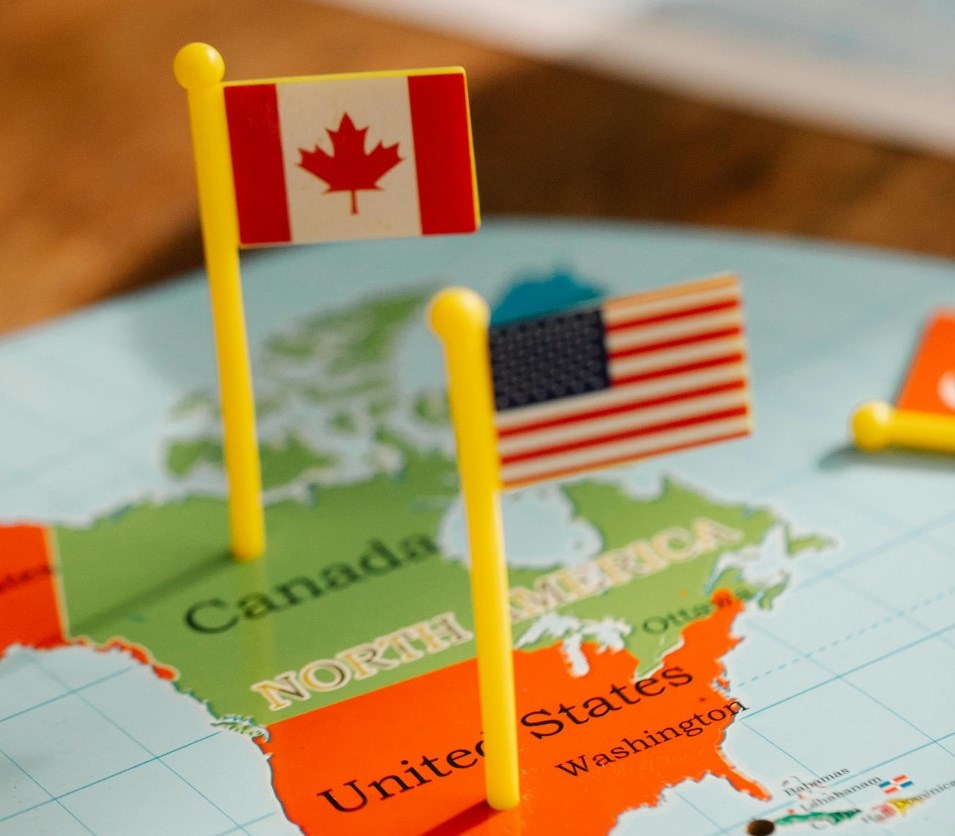Editor’s note: This article was published earlier in the day, before the National Post released its story revealing that the Trudeau government intends to slash permanent resident levels from this year’s 485,000 to 395,000 in 2025, 380,000 in 2026, and 365,000 in 2027.
Canada’s unprecedentedly high population growth rate – 1.3 million in 2023, 97.6% of which came from immigration – is at the root of all of the economic and social problems that Canadians are rightly laying at the feet of the Trudeau government. The ever-growing list of consequences of Canada’s population explosion includes unaffordable housing, severe unemployment, overcrowded hospitals and schools, congested roadways, strained infrastructure, a lack of family doctors, and declining social cohesion.
Public attitudes are clear: an ever-increasing majority of Canadians want lower immigration. In a recent Leger poll, this proportion reached the record level of 72% – a figure that included majorities of all age groups, all regions surveyed, both white and non-white Canadians, and people living in rural, suburban, and urban areas. It’s unclear at this point whether the percentage of Canadians who support immigration restriction has even reached a statistical ceiling, or whether it will keep expanding.
The Trudeau government is panicking over its spiralling popularity, and is aware that public anger over the economic and social consequences of Canada’s out-of-control immigration system is a significant factor in the decline. Throughout this year, the government has gone into damage control mode, enacting a range of restrictions on temporary immigration streams.
The best indicator of the Trudeau government’s incompetence on the immigration file is that most of the new restrictions are simply restoring old rules that the Liberals have loosened or removed. Nevertheless, these reforms will reduce the number of temporary immigrants coming to Canada, and – perhaps most importantly – are an indication that the federal government can be dragged kicking and screaming towards immigration restriction if there is sufficient public pressure.
Here is a (by no means complete) list of some of the measures have taken so far:
- (January) Imposing a cap on international student numbers, reducing the intake by 35%. In April, I wrote an article for the Financial Post arguing that this limit is only a first step, and outlining further measures that should be taken.
- (June) Banning foreign nationals from applying for post-graduate work permits by “flagpoling”, a workaround where temporary residents drive across the U.S.-Canada border and then turn around and apply for a permit at the border, thus avoiding lengthy immigration department wait times.
- (August) Prohibiting foreign nationals on visitor visas from applying for work permits from within Canada.
- (August) Announcing that applications for low-wage temporary foreign workers in regions with an unemployment rate of 6% or higher will be refused.
- (August) Reducing the length of contracts for low-wage temporary foreign workers from two years to one year.
- (August) Capping the allowable share of low-wage temporary foreign workers at 10% of an employer’s workforce (with exceptions for certain sectors such as health care and construction).
- (September) Reuters obtained government data pointing to a border crackdown, with border officials turning away 20% more foreign travellers than last year, and deeming more visa-holders inadmissible than previously. The same Reuters report revealed that Canada’s immigration department is refusing more visitor visas.
- (September) Further reducing the international student cap by another 10%. Foreign master’s and doctoral students, previously exempt, are now included in the cap.
- (October) Making it more difficult for corporations to transfer employees to Canada by implementing stricter requirements for intra-company transfers.
- (October) Raising the mandatory minimum wage of high-wage foreign workers to at least 20% more than the median wage for their position in the region where they work. Not only does this make hiring a high-wage foreign worker more financially painful for employers, it also expands the range of foreign workers considered “low-wage” – meaning that all of the restrictions on low-wage workers mentioned above now apply to more people.
These new measures do not reflect a change of heart in the top brass of the Liberal Party, who remain ideologically committed to drastically expanding Canada’s population through immigration – a philosophy some have aptly described as a Ponzi scheme. Just recently, Immigration Minister Marc Miller defended this ideology in an interview: “If you look strictly at the facts, we need immigration, barring some wonderful initiative that causes a baby boom.”
The restrictions implemented this year do not go nearly far enough in reducing the number of temporary immigrants. They do not even touch the number of permanent residents (though this will likely change on November 1st, when the next Immigration Levels Plan is announced).
Nevertheless, the Liberal U-turn on immigration indicates that Canada’s political elite is reacting to the public’s opposition to mass immigration. We can also see this with Pierre Poilievre’s change of position, which went from open support for large-scale immigration to a pledge to tie population growth to housing, jobs, and healthcare.
Immigration restriction is a majority position in this country. For it to become policy, continuous pressure must be exerted on Canada’s political elite – of every party. This long-term project is crucial to preserving the Canada we know and love.

All content on this website is copyrighted, and cannot be republished or reproduced without permission.
Share this article!




The truth does not fear investigation.
You can help support Dominion Review!
Dominion Review is entirely funded by readers. I am proud to publish hard-hitting columns and in-depth journalism with no paywall, no government grants, and no deference to political correctness and prevailing orthodoxies. If you appreciate this publication and want to help it grow and provide novel and dissenting perspectives to more Canadians, consider subscribing on Patreon for $5/month.
- Riley Donovan, editor